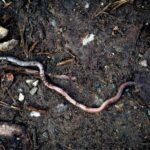Understanding hibernation could revolutionize medical fields such as trauma care and organ transplantation. The ability to induce hibernation-like states in humans may extend the viability of organs for transplantation and improve outcomes for critically ill patients (Drew et al., 2007). Hibernation research has implications for long-term space travel. Mimicking hibernation in astronauts could reduce resource requirements and mitigate the physiological challenges of prolonged space missions.
Hibernation is a physiological adaptation employed by various mammalian species to survive harsh environmental conditions. This state of dormancy involves a significant reduction in metabolic rate, body temperature, heart rate, and other physiological processes. The phenomenon has been extensively studied in mammals such as bears, bats, and ground squirrels, providing insight into the complex mechanisms underpinning hibernation.
Hibernation is characterized by a marked decrease in body temperature (often approaching ambient temperature), metabolic suppression, and altered physiological functions. These adaptations enable mammals to conserve energy when food resources are limited. Understanding the mechanisms and ecological significance of hibernation has broad implications for conservation biology, physiology, and even human medicine.
Hibernation likely evolved as an adaptive response to environmental pressures such as cold temperatures, seasonal food shortages, and predation risk during vulnerable periods. Fossil evidence suggests that hibernation-like behaviors existed in prehistoric mammals, aiding their survival during periods of climatic instability (Geiser, 2004).
Molecular studies have revealed that hibernation is not restricted to a single lineage but has independently evolved multiple times in mammals, highlighting its adaptive significance. Examples include the distantly related hibernating rodents (e.g., ground squirrels) and non-rodent hibernators (e.g., bears and lemurs).
Physiological mechanisms
Metabolic rate reduction is the cornerstone of hibernation. During this period, energy expenditure is minimized by suppressing basal metabolic functions. Studies have shown that oxygen consumption and carbon dioxide production can drop by as much as 90% in hibernating mammals (Heldmaier et al., 2004).
Body temperature in hibernating mammals often drops close to the ambient temperature. For example, the arctic ground squirrel (Spermophilus parryii) can lower its body temperature to as low as -3°C without freezing, thanks to the production of cryoprotective substances such as glucose and glycerol (Barnes, 1989).
Hibernation is accompanied by bradycardia (reduction in heart rate) and hypoventilation. In some species, heart rates drop to just a few beats per minute. This conservation strategy minimizes energy expenditure while maintaining essential physiological processes.
At the cellular level, hibernating mammals exhibit enhanced antioxidant defenses to counteract oxidative stress caused by metabolic fluctuations. Additionally, protein synthesis is downregulated to conserve energy, while certain stress-response proteins are upregulated to protect cellular integrity (Carey et al., 2003).
Bio-Chemical regulation
The hypothalamus is a key regulator of hibernation. It integrates environmental signals (e.g., temperature and photoperiod) and modulates hormonal responses. Studies in golden-mantled ground squirrels (Callospermophilus lateralis) have identified specific hypothalamic nuclei involved in hibernation induction (Heller, 2005).
Hormones such as melatonin, leptin, and cortisol play critical roles in initiating and maintaining hibernation. For instance, elevated melatonin levels in response to shorter daylight hours trigger seasonal changes in behavior and metabolism (Ruf & Geiser, 2015).
Recent research has highlighted the role of specific genes and proteins in hibernation. For example, differential expression of clock genes (e.g., Per and Cry) helps regulate circadian rhythms during hibernation (van Breukelen & Martin, 2002).
Fat stores are the primary energy source during hibernation. Mammals utilize brown adipose tissue (BAT) for thermogenesis upon arousal, facilitated by the uncoupling protein 1 (UCP1) (Cannon & Nedergaard, 2004).
Gluconeogenesis is minimized during hibernation to preserve muscle and organ mass. Additionally, hibernators display enhanced protein recycling mechanisms to prevent muscle atrophy (Fedorov et al., 2009).
Certain species produce cryoprotectants like glycerol or antifreeze proteins, preventing cellular damage from ice formation. These adaptations are crucial for species in subzero habitats.
Evolutionary implications
Hibernation provides numerous ecological benefits, including predator avoidance and resource optimization. It also influences population dynamics, community interactions, and ecosystem stability. Evolutionarily, hibernation allows mammals to exploit niches that would otherwise be inhospitable, contributing to their geographic distribution and speciation (Geiser & Ruf, 1995).
Hibernation research
Controlled laboratory studies allow for precise measurement of metabolic rates, body temperatures, and hormonal levels during hibernation cycles. Field studies using telemetry and data loggers provide insights into hibernation behavior in natural settings, revealing the effects of environmental variables on hibernation. High-throughput sequencing and proteomic analysis have uncovered the molecular underpinnings of hibernation, offering potential targets for biomedical research.
References
- Barnes, B. M. (1989). Freeze avoidance in a mammal: body temperatures below 0°C in an Arctic hibernator. Science, 244(4912), 1593-1595.
- Boyles, J. G., et al. (2007). Energy availability influences microclimate selection of hibernating bats. Journal of Experimental Biology, 210(3), 434-441.
- Cannon, B., & Nedergaard, J. (2004). Brown adipose tissue: function and physiological significance. Physiological Reviews, 84(1), 277-359.
- Carey, H. V., et al. (2003). Stress proteins in mammalian hibernation. American Journal of Physiology, 285(3), R541-R550.
- Drew, K. L., et al. (2007). Hibernation: rapidly reversible depression of metabolism and biochemistry. Annual Review of Physiology, 69, 135-152.
- Geiser, F. (2004). Metabolic rate and body temperature reduction during hibernation and daily torpor. Annual Review of Physiology, 66, 239-274.
- Geiser, F., & Ruf, T. (1995). Hibernation versus daily torpor in mammals and birds: physiological variables and classification of torpor patterns. Physiology & Behavior, 58(5), 567-575.
- Heldmaier, G., et al. (2004). Life on low flame in hibernating mammals. Advances in Space Research, 34(7), 1445-1454.
- Nelson, R. A., et al. (1983). Metabolism of bears before, during, and after winter sleep. American Journal of Physiology, 244(5), R347-R352.
- Ruf, T., & Geiser, F. (2015). Daily torpor and hibernation in birds and mammals. Biological Reviews, 90(3), 891-926.
- Storey, K. B., & Storey, J. M. (1990). Metabolic rate depression and biochemical adaptation in anaerobiosis, hibernation, and estivation. Quarterly Review of Biology, 65(2), 145-174.
- van Breukelen, F., & Martin, S. L. (2002). Invited review: molecular adaptations in mammalian hibernators: unique adaptations or generalized responses? Journal of Applied Physiology, 92(6), 2640-2647.








